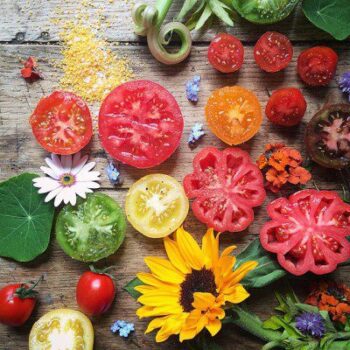
My boy eats cantaloupe in the night glow of lamplight. Juice shimmers in his neck hollows and slides down his tawny belly. Teeth sink into soft ripe flesh, sweetness gurgles across lips, splashes onto the oak floor. My boy, like the melon, is luscious and golden, perfect and summery. I want to snort in the scent of his musky hair, drink him in, my own lush fruit, innocent and sweet.
My husband strides in with news that breaks my idyll. A cantaloupe crisis. Listeria. Recall. Hospital admissions. Symptoms appear two to four weeks after eating. Flu-like aches and fever, maybe septicemia, meningitis, spontaneous abortion, even death.
If I put my fingers in my ears and hum a happy tune, will the threat go away?
*
I love to hear my children slurping and purring at the trough of untidy eating, the decadent joy of politeness abandoned in the privacy of home—sucking up strands of spaghetti, mopping sauce, licking melted ice cream from the bowl. Cooking, eating, and sharing food with my family is a primal act. Transubstantiation—the mother transfers the goodness of leaf and flank to make her children robust. All the joys of fresh food: herby and smelling of dirt and cut grass. Tender salad leaves and cherry tomatoes, plump and melty meat.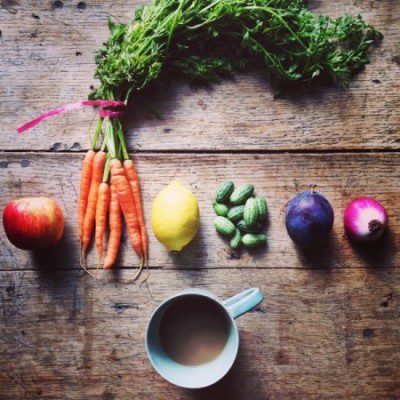 I set the table for dinner with a cotton cloth and napkins and pink coneflowers from the garden. The candles flicker across the prairie blooms, illuminating our family of four as we eat and talk. These moments of communion are as fleeting and precious as quicksilver, snatched between soccer and school, work and play. If one of our highest goods is pleasure, let us share it at the table. La dolce vita. Dinner is our magical campfire in the suburbs.
I set the table for dinner with a cotton cloth and napkins and pink coneflowers from the garden. The candles flicker across the prairie blooms, illuminating our family of four as we eat and talk. These moments of communion are as fleeting and precious as quicksilver, snatched between soccer and school, work and play. If one of our highest goods is pleasure, let us share it at the table. La dolce vita. Dinner is our magical campfire in the suburbs.
But I worry, I fret. What strange hurts hide in the lettuce, the strawberries, the chicken, the melon, the spinach? What dark poisons may turn the eating violent? Will I undo my children with my soups, my stews, my salads?
My ears are alert to news of poisoning. A man left his soup out of the refrigerator for twenty-five days. It smelt funny when he put the spoon to his mouth, but he ate it anyway and landed in hospital for fifty-seven days. A toddler is sickened after stroking a llama. A boy kissed his pet turtle and became ill. These incidents do not faze me—we keep our distance from reptiles, petting zoos, and fermented soups. But I am unhinged by the weekly produce reports. Cantaloupe. Green onions. Sprouts. Ground beef. Hazelnuts. Berries. Cherry tomatoes. Kale. Spinach. Turning pleasure to pain, their accomplices include e.coli, botulism, campylobacter, hepatitis A, norovirus, salmonella, shigella, necrotizing enterocolitis, clostridium perfringens. They lurk in supermarket pyramids of shiny fruit and bagged vegetables.
*
My mother nurtured her brood through discipline, gardening, and food. She spent days pruning and digging. I, the youngest of four children at home, spent hours fashioning leaf costumes for fairies and playing in the orange poppies, lulled by the sound of my mother’s spade cleaving dirt. At day’s end, she cooked dinner and laid a cloth on the dining table. This is how she imposed order, provided unity, and let us know we were safe in our family circle.
Grandmother died when Mother was three. Cooking and gardening and raising children were skills Mother taught herself. She tried out recipes from the Women’s Harmonic Society fundraising cookbook: sweet and sour chicken, nasi goreng, curry, risotto, sautéed brains, Hungarian goulash with paprika and green peppers. These seemed exotic compared to the mutton and mashed-potatoes that most of our neighbors ate. Salad at the time meant iceberg lettuce ringed with sliced boiled eggs and served with store-bought mayonnaise, but ours was tossed with lemon vinaigrette in a wooden bowl rubbed with a garlic clove.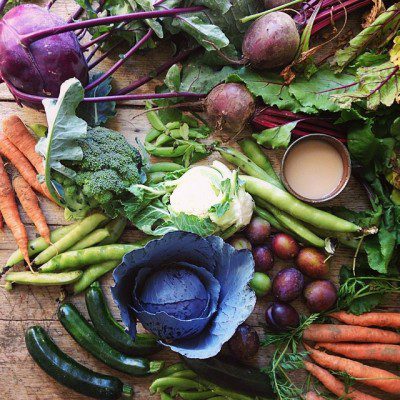 Mother insisted we try everything. I sat stubbornly for hours one night, refusing to eat ribbons of tripe quivering in a white sauce.
Mother insisted we try everything. I sat stubbornly for hours one night, refusing to eat ribbons of tripe quivering in a white sauce.
My two older sisters baked, filling the kitchen with the smell of caramelized sugar and vanilla. They made rhubarb crumble, blackberry and apple tart, fluffy lemon meringue pie and—my favorite—chocolate fudge pudding. Whipped cream slid over the warm topping and pooled into an oozy rich sauce in the bottom of the plate. Food was delicious. It was reassurance. It was love.
My mother grew lemons, rhubarb, fruit trees, tomatoes, raspberries, and blackberries behind her fragrant climbing roses, flowering cherries, and azaleas. A pot of spinach sprouted near the back door. The plain Jane of the garden, it padded out meals often short on meat because we lived on my mother’s widow’s benefit. Spinach was the standby vegetable of my childhood, guaranteed to grow vigorously through mild New Zealand winters. As a child, I wearied of its astringent taste in salads, soups, stews, simmered in butter, but my mother knew it as a reliable source of nutrition.
*
My mother mended and strengthened her children with the five food groups. I wondered, will I kill mine? Spinach has me rocking, teetering, cracking. I dreamed about it, in a Salvador Dali meets Julia Child meets William Wordsworth montage, a nightmarish mash-up. I wander’d into a host of—not golden daffodils—green spinach. The cluster waved to me from a hillside, then melted like Dali’s clocks, screaming into a steaming pot in Julia Child’s tiny French kitchen. I woke sweating. Spinach has become biohazard, not rescue.
America was on alert during the “War on Terror.” When I came back from a vacation to see family in London, the towel guy in my gym asked: “Weren’t you afraid of terrorists?” “No,” I replied. “I’m more likely to be killed by eating spinach. Who needs terrorists when we have the American food chain?”
My mind filled with spinach, or thoughts of. Hackneyed, but true, you don’t know what you’ve got until it’s gone. I want that powerhouse of iron, its potassium and thiamin, its A and C, its carotenoids and folic acid. I wanted it even more when bagged spinach joined the what-not-to-eat list,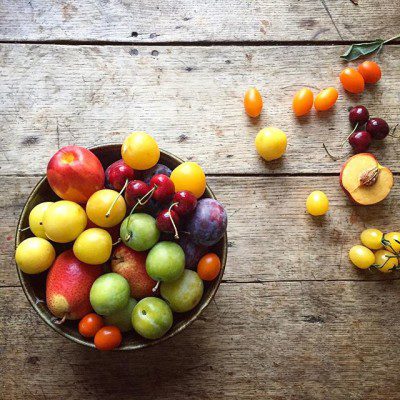 rendered inedible by e.coli 0157:H7, a tidy little rod-shaped bacteria that is particularly toxic to humans. Commercial beds of spinach were sprayed with watered-down cow feces carrying the lethal pathogen. Across twenty-six states, two hundred people got sick, vomiting and purging streams of bloody diarrhea. It felled a previously robust two-year-old and an elderly woman. They got hemolytic uremic syndrome, wherein the red blood cells die off and the central nervous system breaks down, causing hallucinations and tremors. Damage to the occipital cortex causes blindness. The kidneys fail, then the heart.
rendered inedible by e.coli 0157:H7, a tidy little rod-shaped bacteria that is particularly toxic to humans. Commercial beds of spinach were sprayed with watered-down cow feces carrying the lethal pathogen. Across twenty-six states, two hundred people got sick, vomiting and purging streams of bloody diarrhea. It felled a previously robust two-year-old and an elderly woman. They got hemolytic uremic syndrome, wherein the red blood cells die off and the central nervous system breaks down, causing hallucinations and tremors. Damage to the occipital cortex causes blindness. The kidneys fail, then the heart.
I feel so badly for spinach. My attachment goes back to the bunch growing outside my childhood kitchen and the metallic waft of it simmering in hot olive oil. It was never the glamour vegetable at the greengrocers, like truffles, champignons or mâche. Never a star, except in a can for Popeye. Flemish still life paintings highlight sculptural artichokes or cabbages. Arcimboldo’s portraits feature endives, fennel root, celeriac, and parsnips. Not spinach. It’s not on screen in Babette’s Feast or The Cook, The Thief and His Wife & Her Lover. There’s no novel called Spinach, lining the shelves next to Fried Green Tomatoes, Peeling the Onion or The Princess and the Pea. The vegetable doesn’t have a place in history like corn and squash, forever celebrated in national mythmaking at Thanksgiving. Even the potato—once considered the evil cause of poor work attitude, birth defects, and flatulence—has ten museums around the globe. The blight, Phytophthora infestans, destroyed the spud in 1840s Ireland, contributed to the Great Hunger, and led to the diaspora of starving refugees across the globe. Irish corn was shipped off to England, while the Irish people’s food “melted in rottenness on the face of the earth,” wrote Irish nationalist John Mitchel. “The Almighty, indeed sent the blight, but the English created the Famine.” My Irish forbears, Waltons and Nealies, ended up in New Zealand. I understood early that people could be murdered with food, just as they could be nourished. We create powerful legends around sustenance.
*
Food as cure is a concept central to my family lore. My great-aunt was a health nut who avoided coffee, alcohol, and meat. My Indian grandfather was a “doctor” who claimed to cure people through his natural herbal remedies. This was not a perspective shared with the judiciary, which claimed he killed patients. Opium is a natural derivative of plants and was a popular ingredient of “tonics” early last century. It was also used in ayurvedic healing and the sattvic diet of seasonal food practiced by ancient Indians, several millennia before the Greek physician Hippocrates said: “Let food be thy medicine and medicine be thy food.” In 1826, Frenchman Anthelme Brillat-Savarin wrote, “Dis-moi ce que tu manges, je te dirai ce que tu es,” a sentiment that 1960s nutritionist Victor Lindlahr converted to: “You Are What You Eat.”
In a strange synchronicity, this web of health food philosophies binds my great-aunt Val, of Irish-Cornish-Wiltshire heritage, to her Punjabi brother-in-law, my grandfather. The modern whole foods trend dates back to the famous Seventh Day Adventist Dr John Harvey Kellog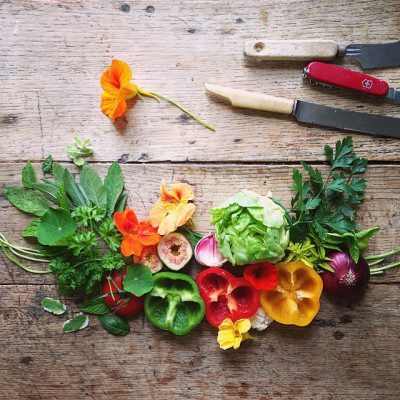 who operated the Battle Creek Sanitarium in Michigan in the late 1800s. In order to promote good digestion, he advocated a vegetarian diet, yogurt enemas, exercise, and abstinence from alcohol and tobacco. Eradicating masturbation was another of his obsessions. He didn’t make much headway with the latter, but peanut butter and corn flakes were hugely successful.
who operated the Battle Creek Sanitarium in Michigan in the late 1800s. In order to promote good digestion, he advocated a vegetarian diet, yogurt enemas, exercise, and abstinence from alcohol and tobacco. Eradicating masturbation was another of his obsessions. He didn’t make much headway with the latter, but peanut butter and corn flakes were hugely successful.
One of Kellog’s acolytes, Edward Halsey, set off in 1900 for far-flung New Zealand, coincidentally around the same time that my herbalist grandfather arrived from India. Halsey began Sanitarium, today a thriving Australasian health food company famous for Weet-Bix breakfast cereal and Marmite yeast spread. The company also ran vegetarian cafes until the 1960s, way ahead of the era’s fervor for lentil stew, kale, and socks with Birkenstocks.
Great-aunt Val was the only Seventh Day Adventist in a family of Methodists. She lived alone with her pet goat Billy, and didn’t smoke cigarettes or indulge in any other vices outlined in Dr Kellog’s tracts. (I don’t know her stance on masturbation, but she was single her entire life.) “I can’t eat that,” she told mother. “It wouldn’t be good for my digestion. No, I don’t eat that either.”
She blasted around town on a tricycle powered by a two-stroke lawn mower engine, and ate at Hare Krishna cafes in their 1970s heyday. She was healthy and spry until her death at 97. In a photograph, she climbs through her front window, a leg flung over the sill, her white hair haloed by billowing lace curtains. She was the only relative I knew, aside from my mother and siblings, and she formed part of our family’s own mythology of food. I wonder if she influenced my mother’s vegetable-oriented cuisine, a catalyst for the pot of spinach by the door?
*
Spinach originated in southwest Asia. The name derives from the Persian word ispanai, or “green hand.” In China, it was the “herb of Persia,” and in England, the “Spanish vegetable” after the Moors introduced it to Europe via Spain. Italian Catherine de Medici gave us a la Florentine—on a bed of spinach.
On wet Sunday afternoons when I was a kid, I watched re-runs of old cartoons. “I’m strong to the fin-ich/Cause I eats me spin-ach,” sang Popeye the Sailor Man, E.C. Segar’s cartoon character. He apparently tripled the American public’s consumption of the canned vegetable in the 1930s. Ironically, across the Atlantic Ocean, George Orwell claimed in 1937, “We may find in the long run that tinned food is a deadlier weapon than the machine gun.” Canned or fresh, spinach was on our family’s menu, and Mother enticed us to eat by singing the Popeye song.
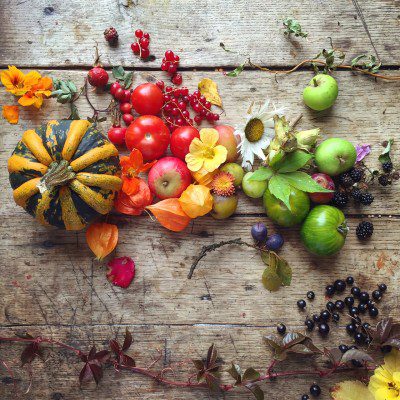 Now I discover that the humble green is a rock star of rural United States. A nation of memorials: including spinach monuments.
Now I discover that the humble green is a rock star of rural United States. A nation of memorials: including spinach monuments.
Chester, Illinois, is the proud “Home of Popeye.” The muscular sailor tops the banner of the town’s website. Sitting on a bluff overlooking the Mississippi, in Mark Twain country, the town of 2600 people and eleven churches boasts a six-foot Popeye statue with bloated bronze cheeks and oversized forearms, as well as five other statues from the cartoon strip and a three-day celebratory annual picnic.
The city of Alma, Arkansas, the self-proclaimed Spinach Capital of the World, hosts an annual festival with an all-you-can-eat contest of canned spinach. Two water towers are painted green to resemble the largest spinach cans anywhere. Popeye is celebrated with two statues, including one commissioned after the e. coli scare. Thieves repeatedly stole one statue, until the city chained it in place.
Crystal City in Texas, another claimant to Spinach Capitol of the World, crowns Miss Spinach at its festival each year. In 1937, Design magazine said of the city’s Popeye: “The erection of this statue in the heart of the world’s greatest spinach-growing country will be a fitting tribute to the man who has made both young and old alike ‘Spinach-conscious’”!
Lenexa, Kansas, offers guests at its festival the opportunity to sample the world’s largest spinach salad, enter a spinach recipe contest, or put their babies in the Swee’ pea baby crawling contest.
On goes the list. Romanticized, yet dangerous.
*
At home, my children ate the fresh chopped leaves cooked in pies and blended into bolognaise, but never alone on a plate. While I was afraid of possible pathogens, the boys were suspicious of undisguised vegetables in plain sight. I read them Dr. Seuss’s tale about getting frightened by spooky pale green pants with nobody inside them:
Then one dark night in Grinitch
I had to do an errand there and
Fetch some Grinitch spinach…
…I lost my grinich spinach
But I didn’t even care
I do care about losing my spinach. I want my eggs Florentine back, golden yolk oozing over emerald, just how it should be on the color wheel. I want my spanakopita, the first crunch of crisp buttery pastry sticking to my teeth followed by a creamy blend of feta and spinach.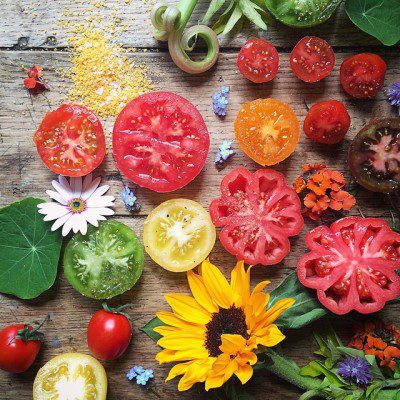 I want my baby spinach leaves mixed into a salad of mesclun, herbs, and lettuce, balancing a palette of pale, mid, and deep green, maybe with walnuts sprinkled over and a few daubs of chevre.
I want my baby spinach leaves mixed into a salad of mesclun, herbs, and lettuce, balancing a palette of pale, mid, and deep green, maybe with walnuts sprinkled over and a few daubs of chevre.
Popeye may have eaten his spinach canned, but it’s best eaten freshly cooked or raw. It is rich in vitamins K, A, C, and B, as well as the minerals manganese, folate, magnesium, and iron. It contains lutein, an antioxidant that protects our eyes from macular degeneration, anti-cancer compounds, and heart-protecting enzymes. You can understand why parents blend it into baby food and whip it into smoothies for their kids, with no thought to the killer lurking in the food processor. My mother still grows a bunch at her back door, in a pot with some sorrel and arugula. She picks a few leaves to add to her salad or steam for dinner. Hers is a victory garden of sorts, evading the enemy toxins in industrialized food.
I live thousands of miles from my mother. I have created my own mythology around the dinner table, building a rampart against distance, loneliness, and the anxiety that underpins so much of American life. But it has seeped in anyway, torpedoing la dolce vita. Pathogens in the spinach and cantaloupe pull the cloth from my pretty table.
I fear that neither candles nor flowers will keep my children from withering. No matter that the risks are low. No amulets can guard against the hotness and surging, the streaming and darkening, squeezing and rushing and bleeding and failing.
***
Original photographs by Philippa Stanton.




